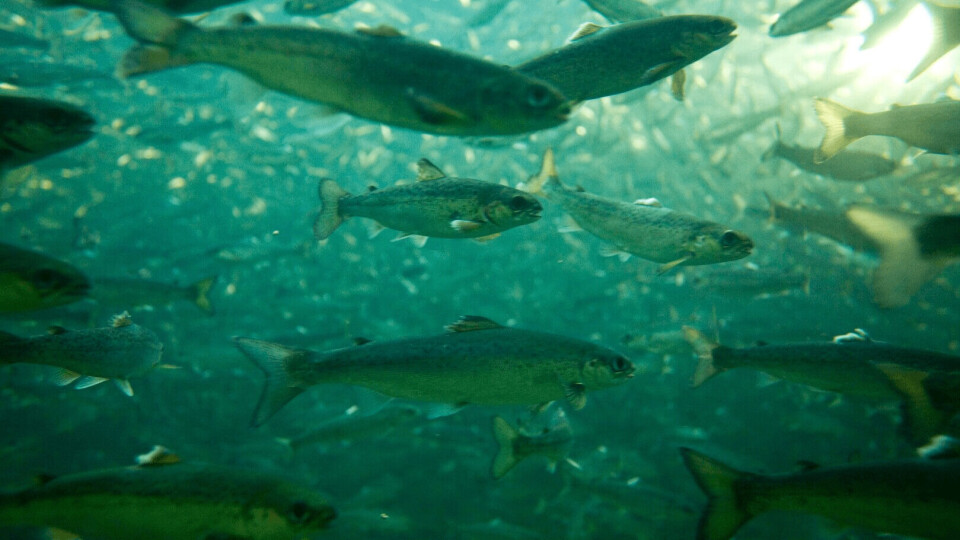
Study finds ‘optimal’ current speed for RAS post-smolts
The optimum velocity of water in recirculating aquaculture systems used for post-smolt salmon should be slightly above one fish body length per second, researchers in Norway have concluded.
Past studies have indicated that higher water velocities promote growth in salmon, but the optimal velocity and its associated health and welfare consequences hadn’t been established.
Scientists at the Nofima institute determined the effects of different water velocities on growth, muscle development and welfare to estimate the optimum velocity for the rearing of post-smolts in RAS.
12 tanks
They divided 2,400 salmon post-smolts with an average start weight of 80g into 12 tanks (200 fish per tank) and set the water velocities in four triplicate tanks to low – 0.5 body length per second (BL/s); medium (1.0 BL/s); high (1.8 BL/s); and very high (2.5 BL/s).
The trial lasted for three months and organ samples were collected at three time points. Time-lapse cameras revealed a relatively even fish distribution in the tank in low and medium velocity groups. In contrast, fish in high and very high velocity groups displayed strong schooling behaviour at specific regions in the tanks.
Researchers observed a linear relationship between water velocity and average growth rate, which resulted in a 5.7% higher average body weight in the very high velocity group in comparison to the low group at the end of the study.
Muscle fibres
The condition factor of fish in the low velocity group was lower than in the other three groups, and bigger muscle fibres were identified in the high and very high velocity groups.
However, increased cases of inflammation were observed in the high and very high velocity groups, along with increased incidence of skin damage and pelvic fin damage.
Skin histology revealed relatively thinner epidermis at higher velocities, and there were also increased cases of aneurysm, lamellar clubbing and fusion.
Mucosal health
“These findings provide further evidence that elevated water velocities have positive effects on the growth rate of post-smolts even at the highest levels tested to date,” wrote the researchers.
“On the other hand, the external welfare scores, histological analyses and the molecular data indicate that mucosal health was negatively affected by higher velocities. Thus, based on this study, the optimal water velocity for long term rearing of salmon post-smolts in RAS is most likely located slightly above 1 body length per second.”
A paper by the researchers, entitled “The optimum velocity for Atlantic salmon post-smolts in RAS is a compromise between muscle growth and fish welfare”, is included in the journal Aquaculture and can be accessed for free here.























































